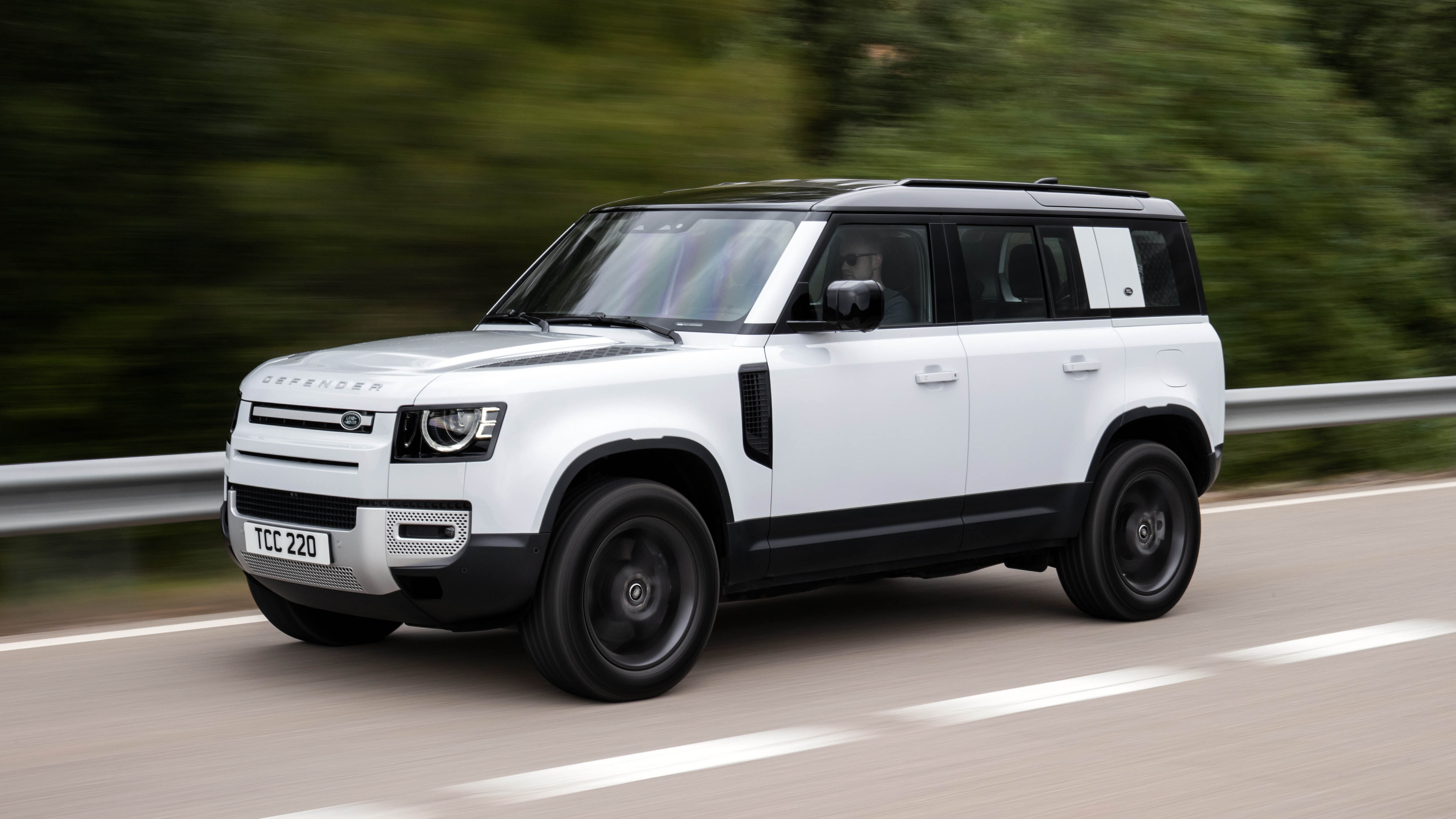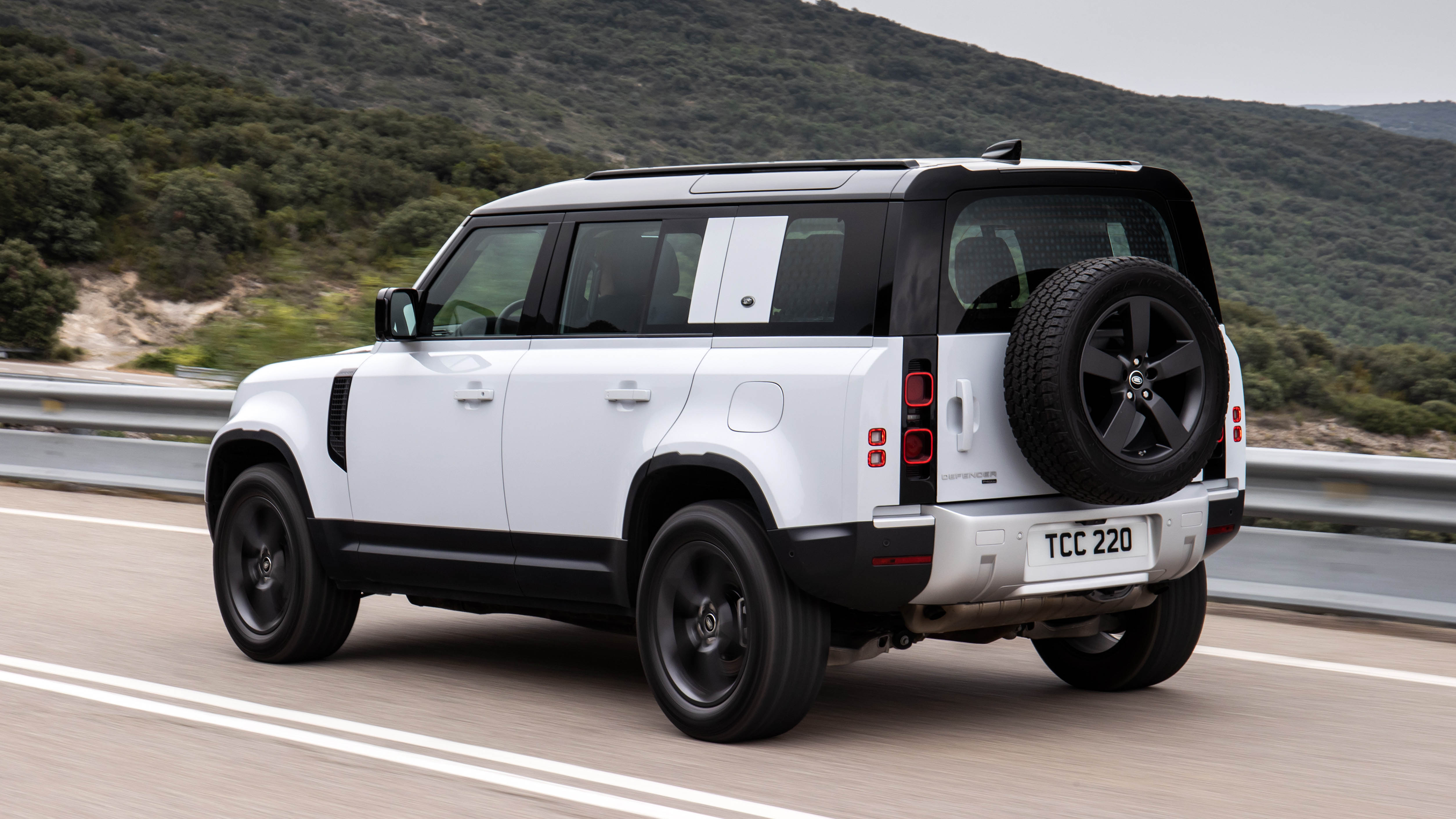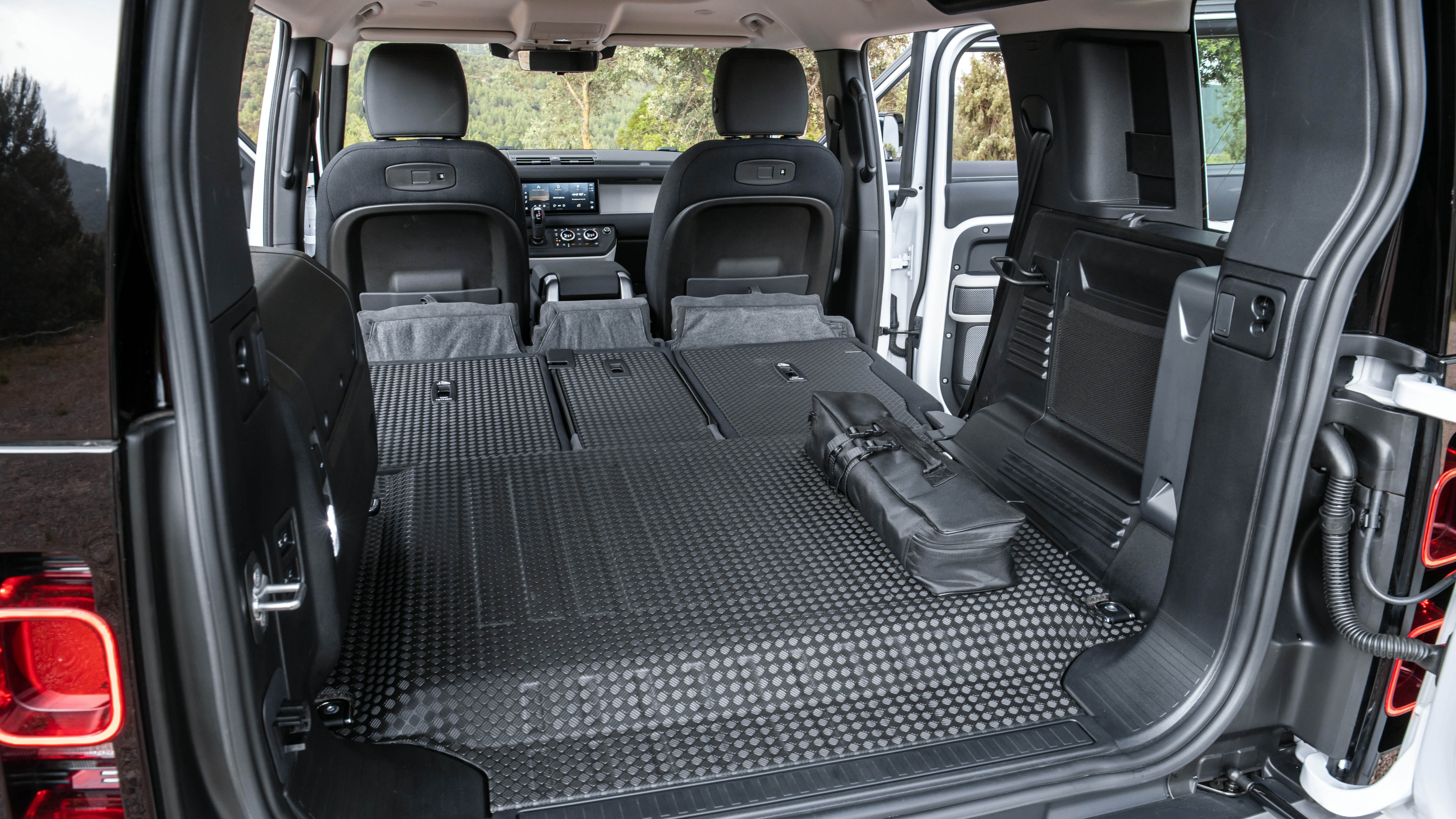
Land Rover Defender P400e review: plug-in hybrid Defender tested
£85,515 when new
SPEC HIGHLIGHTS
- Battery
Capacity15.4kWh
- BHP
404bhp
- 0-62
5.6s
- Max Speed
119Mph
This doesn’t exactly look new?
Correct. On the outside at least, the new Defender P400e looks almost identical to its combustion-engined siblings. The only giveaway to its electrified nature is the newly-sprouted charging flap on the left rear flank…
In all other ways, this is the modern-day Defender design as we first saw it back in 2019. No doubt you’ll have some *opinions* on the styling, but in our humble one it hits the mark perfectly both inside and out. For obvious reasons, though, the PHEV does only come in long-wheelbase 110 form.
So it looks the same. How is it different underneath?
Right, let’s get into the techy bits. The P400e gets a 2.0-litre turbocharged four-cylinder Ingenium petrol engine that’s built in Britain and produces 296bhp under its own steam. Here though, it’s paired with a 105kW electric motor and when both work together there’s a maximum of 398bhp and 472lb ft of torque. Very healthy.
The Defender’s smooth and standard eight-speed ZF automatic gearbox is present and correct, and the P400e is permanently in four-wheel drive mode whether you’re running on electric power alone, a bit of both or purely petrol power. It’s also unique in that all-electric drive can be combined with the low-range ratios, so off-road abilities should never be compromised.
Hit me with some more figures, then…
The battery is a 19.2kWh lithium-ion unit that can provide up to 27 miles of EV range (or just over 20 if we’re talking real-world). You can get all the way up to 85mph in EV mode too, but at that point aero – or lack of it – really is the arch enemy of range. Best to stick to electricity in town, then.
The fairly hefty combined power output means 0-62mph only takes 5.6 seconds, whilst 50kW rapid charging means you can get to 80 per cent in 30 minutes. A 7kW wall box will give you the same amount of charge in two hours.
It is a big old bus, the 110 with added batteries. It weighs 2,525kg all-in, but does manage an impressive 3,000kg towing capacity (that’s 500kg less than other Defenders).
Land Rover quotes up to 85.3mpg and just 76g/km of CO2. Obviously those have to be taken with a pinch of plug-in salt – we managed 36.8mpg on a brisk 60-mile drive cross-country – but you’ll do much better if most of your journeys are local. For reference, the Defender only gave us a ‘Driving Score’ of 56 per cent and suggested we take a look at its eco tips. Must try harder.
How does the powertrain cope in the real world?
It’s impressive. Things always start off in HYBRID mode, but a new button on the centre console allows you to switch to either EV or SAVE. Both are reasonably self-explanatory. With the two power sources working together it gets up and goes, although the four-cylinder is a little less refined than its larger capacity siblings when asked to work hard.
The switch between electric and petrol drive is fairly seamless, though, and there’s a decent feel to the brake pedal despite its regenerative properties. The extra weight doesn’t seem to have harmed the Defender’s progressive steering and general on-road manners either.
Is the interior any different?
Nope.
Top Gear
Newsletter
Thank you for subscribing to our newsletter. Look out for your regular round-up of news, reviews and offers in your inbox.
Get all the latest news, reviews and exclusives, direct to your inbox.
Well… hardly. You do get a couple of new display options for things like charge and energy usage on the central screen, but other than that it’s business as usual in what Land Rover calls the ‘constructivist interior’. Yeah, us neither.
It looks massive. Is it practical?
Good question. The P400e’s battery is under the boot floor, so you can’t have the third-row/seven-seat option. You still get a massive 853-litres of space back there though, and you can spec the front-row jump-seat if you want extra child-carrying space.
Does it still do all of the off-road stuff?
We haven’t had the chance to properly test the PHEV off-road as of yet, but it has the full suite of terrain response modes, adaptive air suspension and all of the off-road cameras deployed by other Defenders. Combined with the low-range trickery, it should be just fine.
What will all of this cost me?
Well, if you want a precise number it starts at £65,915, but that’s before you get into the minefield that is the modern-day Defender’s options list. There are still the full array of Accessory Packs available, and spec for spec it’ll cost slightly more than the six-cylinder P400 if you’re buying outright.
Featured

Trending this week
- Car Review
BMW 1 Series
- Top Gear's Top 9
Nine dreadful bits of 'homeware' made by carmakers






